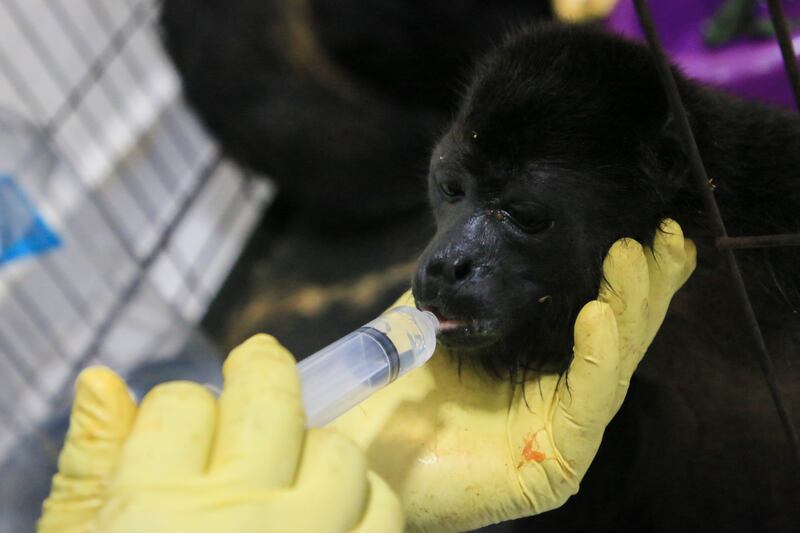A heat wave across Mexico is causing howler monkeys to drop dead from the jungle canopies. According to The Washington Post, at least 147 howler monkeys have died in Tabasco and Chiapas in southern Mexico. In some areas, the temperature has reached 113 degrees.
Howler monkeys are named so because they are known to create a loud cry that can be heard up to 3 miles away, according to National Geographic. They often howl at dawn and dusk and it serves as a warning to other troops that may be in the area. Howler monkeys can have red, brown or black fur and often have a beard. Certain species, like the red howler, are targets for hunters.
In Mexico, the howler monkeys act as a rooster does in the United States: Their calls signal when the day is starting and when it ends. This is very common in the Mexican city Comalcalco, per The Washington Post. But residents have been hearing their howls less and less as the heat wave has grown worse.
Gilberto Pozo, a wildlife biologist, told The Guardian that the howler monkeys are “falling out of the trees like apples” while appearing in a state of dehydration before dying within minutes. What normally causes the fatal blow of their death is falling dozens of yards down from the jungle canopy onto the hard ground.
The current state of Mexico’s howler monkeys
Mexican veterinarian Victor Morato told The Washington Post that residents have found up to 10 dead howler monkeys at a time.
According to The Associated Press, howler monkeys started dying around May 5 and it didn’t ”hit its peak” until this past weekend; Pozo explains how a combination of heat, drought, forest fires and logging activities deprives the species of many basic necessities, such as shade and food.
When the monkeys are brought to veterinarians for help, veterinarian Sergio Valenzuela from Tabasco explained how “(the monkeys) arrived in critical condition, with dehydration and fever. They were as limp as rags. It was heatstroke,” per The Guardian.
Morato’s clinic has had to hook up howler monkeys to IV lines full of electrolyte fluids. Morato told The Washington Post, “It’s the saddest thing to have them stretch out their little hands to you as if to say, ‘Please help me, I’m dying.’ And more heartbreaking yet is to think that we humans have contributed to this disaster.”
According to The Associated Press, several monkeys appear to be recuperating. Valenzuela explained that at his clinic, the monkeys are recovering and he knows this because they have started becoming aggressive again, which is a healthy sign for this species. But residents have been warned to not take in baby monkeys they may find on the ground, since they can become ill from household pets.
Pozo’s team is also currently trying to round up a team of veterinarians that can help give the howler monkeys the attention they need in order to survive.

